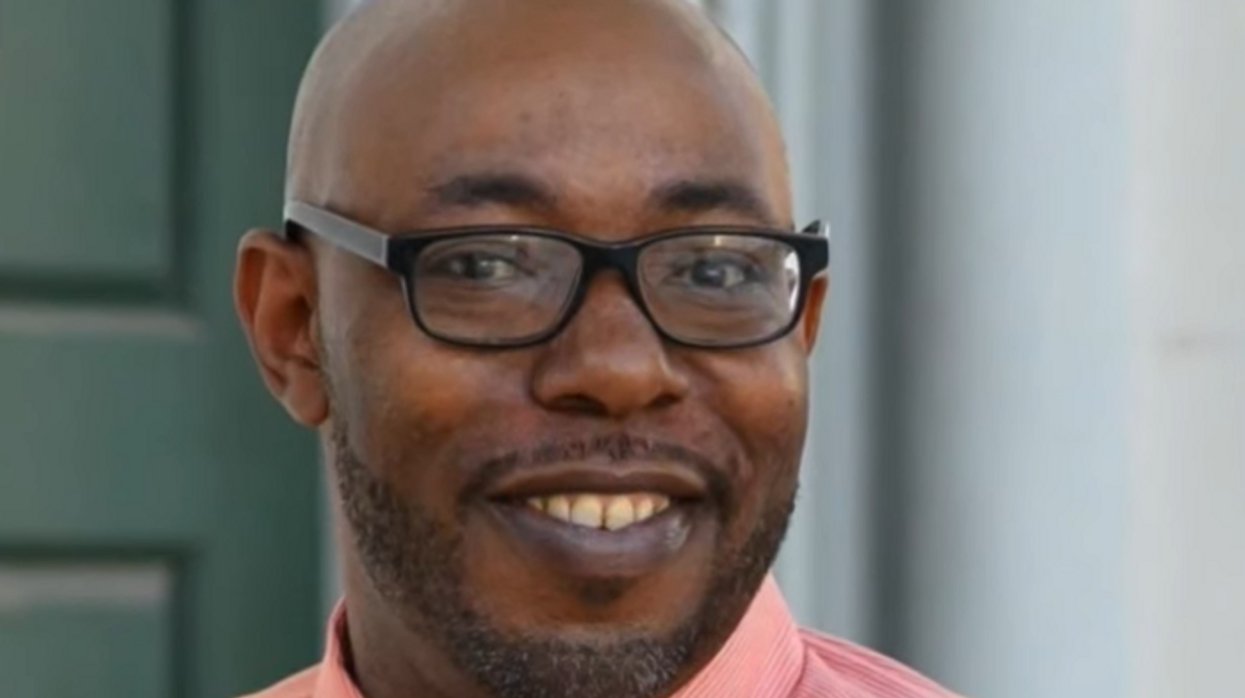As if GDP growth crawling at 0.7 percent in the fourth quarter of 2015 and the stock market tanking in 2016 aren’t enough to scare everyone, something even more frightening is coming.
The soldiers of fortune at the U.S. Federal Reserve have devised an insidious plan to solidify their control over free markets and America.
This prescription envisions banks lending cheaply and consumers spending robustly, spurring economic growth and propping up beleaguered markets.
But the reality is quite different.
This isn’t just an insane policy, it’s a mutually assured destruction policy – the equivalent of a “nuclear option” in economics and finance.
 A video screen on the floor of the New York Stock Exchange shows the interest rate decision of the Federal Reserve, Wednesday, May 1, 2013. (AP Photo/Richard Drew)
A video screen on the floor of the New York Stock Exchange shows the interest rate decision of the Federal Reserve, Wednesday, May 1, 2013. (AP Photo/Richard Drew)
After causing the credit crisis by manipulating interest rates too low for too long, the Fed had to rescue big banks by implementing ZIRP, their zero-interest-rate policy, and then quantitative easing (QE).
The one-two punch allowed insolvent big banks to borrow at no cost (ZIRP) and buy trillions of dollars of U.S. Treasuries, which they’d re-sell to the Fed for fat profits under the $4 trillion buyback scheme (QE).
Too bad ZIRP and QE never trickled down to the economy at large, evidenced by GDP growth averaging less than 2 percent over the last eight years. Instead, the bulk of the Fed’s “stimulative” efforts pumped up various asset classes, especially stocks.
Now, with economic growth faltering, recessionary fears mounting, and increasingly volatile stocks slipping, the Fed is floating the idea of a negative-interest-rate policy, or NIRP.
What NIRP Means for the Banks
But instead of spurring lending by banks and spending by consumers, NIRP will have the opposite effect, and also magnify the dangers facing savers and investors.
NIRP not only lowers the cost of borrowing, taking it into negative territory – which theoretically means borrowers get paid to borrow – it flattens the yield curve.
Just because banks incur a small cost to sit on idle cash doesn’t mean they’ll lend more money. NIRP will result in banks lending less.
As rates get compressed along the yield curve, flattening it, banks will be faced with lending for longer periods at lower interest rates, not higher rates. That reduces their net interest margins and profits.
Besides, if you’re a banker and rates have been manipulated to artificially low levels, will you lend a lot of money out at low fixed rates and face losing money on all those loans when rates eventually rise?
No way.
Banks are going to suffer. It’s already happening in Europe, where the European Central Bank (ECB) instituted NIRP last year. Bank stocks across Europe have been pounded down on average 30 percent, with some down more than 60 percent, in just the past few months. NIRP isn’t working for the banks there.
And it isn’t working for the economy, either. Eurozone growth last quarter was 0.3 percent.
What NIRP Means for Consumers and Savers
Consumers aren’t going to run out and spend just because they might be charged to keep money in a bank.
Resorting to NIRP sends a direct message to consumers that the Fed’s worried about deflation; it’s a clear “no growth” message. So why would still-leveraged and indebted consumers run out and spend if they believe prices will be cheaper down the road?
They won’t. That consumers will defer spending in anticipation of falling prices is what the Fed fears most about deflation. That’s why the Fed’s message that it sees deflation won’t stimulate spending; this time it will curb it.
As far as savers, they won’t get anything on their short-term holdings and, instead of being charged to park deposits at banks, will take their cash home.
The Fallout Will Be Nuclear
So, why is the Fed really planning on negative interest rates?
And they are planning on it, despite what Fed Chair Janet Yellen told Congress last week, that they had merely looked into legal issues.
That’s not true. The Fed already told banks to model negative interest rates into their upcoming stress tests. And Fed Vice Chair Stanley Fischer told the Council on Foreign Relations in New York in a speech back on Feb. 1, 2016, that the Fed was discussing NIRP.
What’s nuclear about NIRP will be its fallout.
Because Americans will take cash out of banks, further impairing their deposit base and reserve requirements, something will have to be done about cash and withdrawals.
Mario Draghi, head of the ECB, told the European Commission on Monday that eliminating the European Monetary Union’s 500 euro note was being discussed.
Eliminating the $100 note is being pushed here by one of the most dangerous men the United States ever faced from within, Lawrence Summers.
Why is Summers dangerous? It was Larry Summers who, as Deputy Secretary of the Treasury under his mentor, former Goldman Sachs CEO and then Treasury Secretary Robert Rubin, pushed along with then Fed Chair Alan Greenspan the final undoing of Glass Steagall, which led to the merger of investment banks and commercial banks and the credit crisis.
And for his hard work, Summers succeeded Rubin as Treasury Secretary and then pocketed millions from lending his name to a hedge fund that made millions betting against the leveraged banks Summers helped create.
By eliminating large-denomination bills, central banks can better control the money supply. If it’s too hard to take stacks of $20 bills out of your bank and hide them somewhere, you’ll leave them in the bank.
Which works out perfectly for the banks, because in an insolvency they can take your money, or at least restrict you from withdrawing it, to help meet their reserve requirements or avoid insolvency.
It’s in the laws now – big banks can do that to you.
The Fed, under the guise of having to make NIRP effective, to save the economy, will push for the elimination of large-denomination bills to keep depositors’ money in banks, to control the economy and save the banks (when their losses look like they’ll threaten the economy and markets) only to enrich them again when the dust settles.
But America won’t be the same. The final nail in the free market’s coffin will have been hammered in by the Fed, and most people won’t have any idea an oligarchy of bankers will have turned the United States into their central-planned, socialist playground.
Be afraid of NIRP. Be very afraid.
Congress Kills $11B in Social Security Benefits
Buried in Sec. 831 of an emergency law is a historic Social Security overhaul. Starting May 1, 2016, an est. $11 billion in benefits could vanish.
–
TheBlaze contributor channel supports an open discourse on a range of views. The opinions expressed in this channel are solely those of each individual author.


 A video screen on the floor of the New York Stock Exchange shows the interest rate decision of the Federal Reserve, Wednesday, May 1, 2013. (AP Photo/Richard Drew)
A video screen on the floor of the New York Stock Exchange shows the interest rate decision of the Federal Reserve, Wednesday, May 1, 2013. (AP Photo/Richard Drew)


